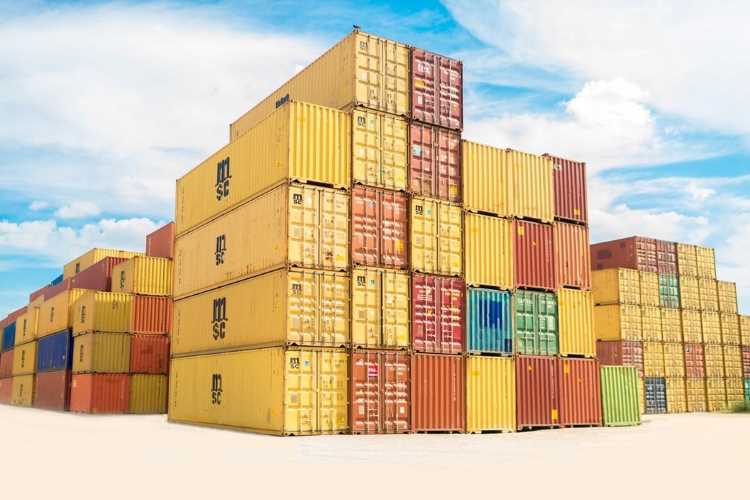
India’s agriculture exports grew 17.34% to $41.25 billion in financial year 2020-21, bucking stagnation in the previous three years. The balance of trade in agriculture rose 42.16% to $20.58 billion during the year, otherwise marred by the Covid-19 pandemic and the lockdown measures taken to control its spread.
The country’s farm exports other than marine and plantation products grew 28.36% to $29.81 billion in the last financial year, compared with $23.23 billion in 2019-20. The rise in farm exports is due to higher demand for staples during the pandemic crisis. In rupee terms, the country’s agriculture exports rose 22.62% in 2020-21 to Rs 3.05 lakh crore, compared with Rs 2.49 lakh crore in 2019-20.
Cereals, spices dominate agriculture exports
Export of cereals registered a huge jump with shipments of non-basmati rice growing 136.04% to $4794.54 million, wheat by 774.17% to $549.16 million, and other cereals such as millets and maize growing by 238.28% to $694.14 million.
READ I Atma Nirbhar Bharat Package offers precious little to informal sector
The largest markets for India’s farm exports are the US, China, Bangladesh, UAE, Vietnam, Saudi Arabia, Indonesia, Nepal, Iran and Malaysia. Exports to Indonesia grew by 102.42%, Bangladesh by 95.93% and to Nepal by 50.49%. Oil meals (growth of 90.28% to $1575.34 million), sugar (growth of 41.88% to $2789.97 million), raw cotton (growth of 79.43% to $1897.20 million), fresh vegetables (growth of 10.71% to $721.47 million) and vegetable oils (growth of 254.39% $602.77 million) also recorded jumps in exports.
Shipment of spices such as pepper, cinnamon, turmeric, ginger, cardamom and saffron also recorded high growth during the period. Pepper exports grew by 28.72% to $1269.38 million; that of ginger, saffron, turmeric, thyme, bay leaves etc by 35.44% to $570.63 million; cinnamon by 64.47% to $11.25 million; and of nutmeg, mace and cardamom by 132.03% to $189.34 million. Export of spices recorded an all-time high of $4 billion in the year.
Exports of organic products registered a growth of 50.94% to $1040 million in 2020-21. Items of organic exports comprise oil cake/ meals, oil seeds, cereals and millets, spices and condiments, tea, medicinal plant products, dry fruits, sugar, pulses and coffee.
READ I ‘India’s unemployment crisis unprecedented; government spending only way out.’
Clusters, AEP come into play
Export clusters also showed improved performance. Fresh vegetables and mangoes from Varanasi and black Rice from Chandauli were exported for the first-time last year. This will benefit farmers of the respective regions. Exports from other clusters such as oranges from Nagpur, banana from Theni and Ananthpur, and mango from Lucknow also recorded improved performance.
India had announced its first Agriculture Export Policy (AEP) in December 2018. Following the implementation of AEP, Maharashtra, UP, Kerala, Nagaland, Tamil Nadu, Assam, Punjab, Karnataka, Gujarat, Rajasthan, Madhya Pradesh, Andhra Pradesh, Telangana, Manipur, Sikkim, Nagaland, Mizoram and Uttarakhand had implemented state-specific plans for farm exports.
Under AEP, 46 product-district clusters were identified for promoting exports. In all, 29 cluster-level committees were formed to oversee the operation of these clusters. An interaction of 60 Indian Missions and stakeholders was initiated to identify the products eligible for promotion under the exports strategy. Pesticide residues in exports have affected Basmati rice shipments to EU. The government has made EIC testing mandatory for Basmati exports to EU. The Punjab has banned the sale of nine chemicals including tricyclazole and buprofezin, during the Kharif season 2020.
Country-specific strategies have been adopted in consultation with Indian embassies for promoting agriculture exports to West Asian countries. The government organised virtual buyer-seller meets in different countries for creating a virtual platform for Indian exporters. Such meets were organised in UAE, Oman, Bahrain, Kuwait, Qatar, Saudi Arabia and Iran for interaction between exporters and importers.
